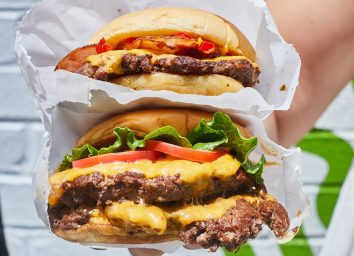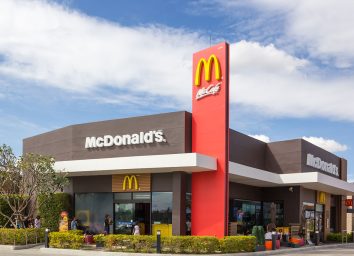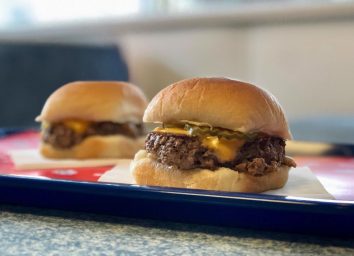The #1 Order to Never Make at a Burger Joint, According to Chefs
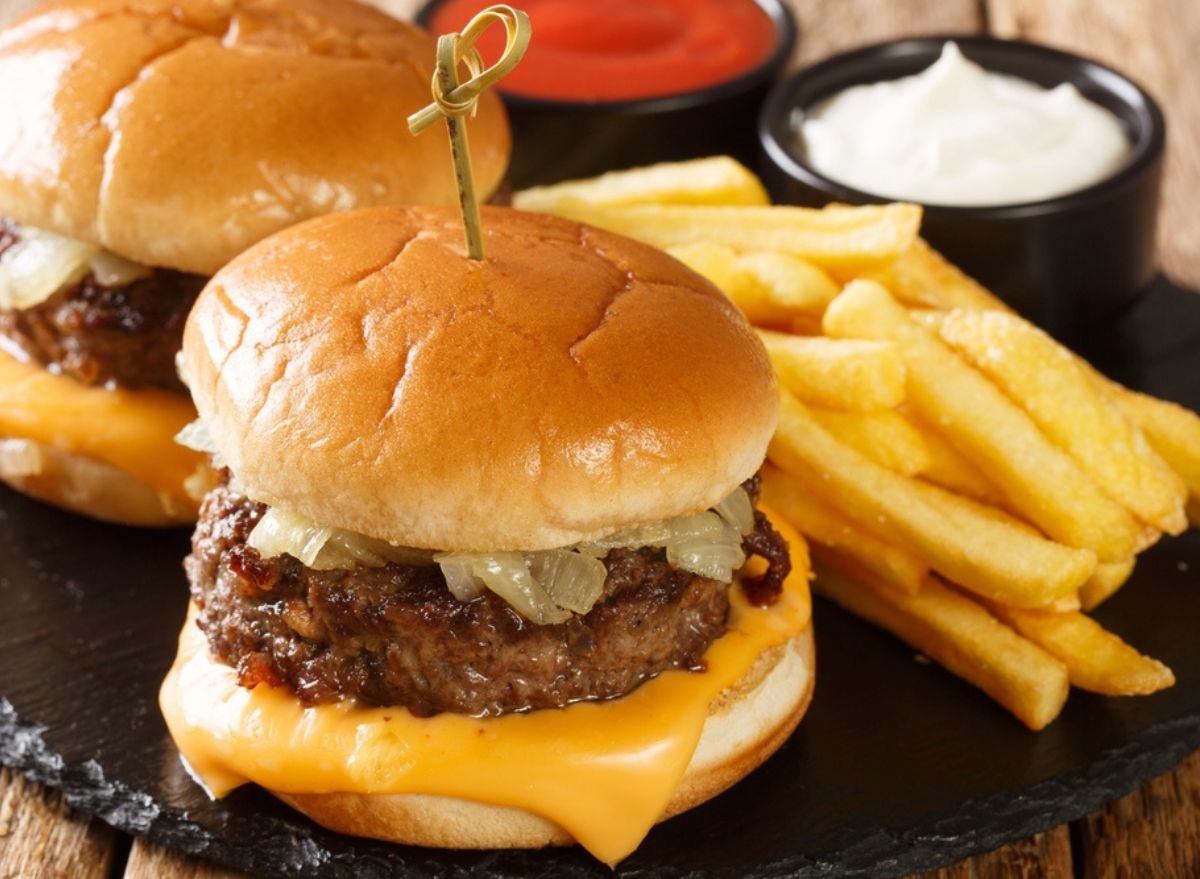
Just like steak, doneness is something that can make or break a burger. Operating on a similar scale as steaks, from rare to well-done, burgers can be cooked to different temperatures, with each rung affecting the final product in different ways.
Unlike most fast-food burgers, which tend to entail thinner patties cooked to uniform temperatures, burgers at full-service restaurants are often where customers are asked how they’d like their burger cooked — and the answer is sure to make all the difference.
No matter the caliber of the burger joint, be it a chain or a chef-driven concept utilizing the highest quality ingredients available, the temperature at which a burger is cooked is inevitably going to leave the ultimate impression.
The fact is, it doesn’t matter if a restaurant is sourcing top-of-the-line grass-fed beef from a bougie ranch in Idaho or not; if the finest quality product is cooked improperly—or for too long—it will inevitably ruin it. That’s why a well-done burger, cooked the longest (often too long), is a risky order that’s best avoided. Unless you enjoy the taste of chewing on a charcoal briquette.
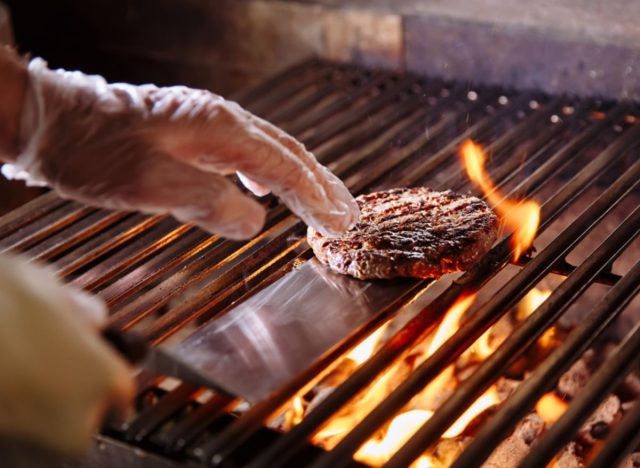
Opinions on temperature and pinkness aside, the basic science of it boils down to the fact that the more heat that’s applied to a burger patty, the greater the difference in texture and taste—and not in a good way. For confirmation, we asked some seasoned pros who know a thing or two about well-done burgers and why they are a big no-no at restaurants.
“Burgers that are cooked well-done are typically too dry, so they lose all the flavor and texture of the beef — it’s like eating a hockey puck,” says Darryl Harmon, executive chef of Clinton Hall, a popular beer hall and restaurant with five locations in New York City. Oh, and he happens to be the winner of Food Network’s Burger Bash festival, so he knows his ground beef.
According to Harmon, ordering rare or medium-rare is simply superior. “The meat is moist, and you can get that fatty melt-in-your-mouth texture that I love. As far as flavor, you can actually taste the quality of the beef or meat you’re using.”
At Clinton Hall, Harmon opts for a good ol’ fashioned smash burger (“I like a smash burger because you get a nice crust on the outside and still get that juicy flavor in the middle that you can only get from a medium-rare/medium temperature”), and he likes an 80/20 meat-to-fat ratio, as the fat lends to the flavor. And cooking said burger beyond medium runs the risk of diminishing that flavor.
Mike DeCamp, whose Parlour restaurants in Minneapolis and St. Paul have a following for their Parlor Burgers, concurs. “When you order a well-done thick burger, it will be charred on the outside and dry and crumbly on the inside and that sounds like no burger that I want to eat,” he says. “Once the inside is cooked to 165 degrees, you have cooked all the joy out of what was once a pleasurable eating experience. Good high-quality beef is nothing to be afraid of, and once you find a place that makes a great thick burger, do yourself a favor, live a little, and get it medium-rare.”
“Customers think the meat isn’t cooked, because when the meat is ground, it can tend to have more color, and the idea of seeing blood freaks them out,” says Harmon about some customers’ instinctive aversions to anything cooked less than medium. “Usually, they’re used to meat being a solid texture, which is not the case for most burgers.”
According to Gary Hickey, executive chef of Flores Concepts’ Charro Steak & Del Rey in Tucson, food-borne illness is a common reason why people might be iffy about rare burgers, but that’s only a concern if you get your burgers from a non-reputable source.
“There has been a long-running stigma by the health department that undercooked proteins are not safe, but in all honesty, the only way undercooked proteins are dangerous is if they have been handled poorly.” Which is not a concern for Flores, who grinds beef for burgers in-house from hand-trimmed grass-fed steaks. “When you cook your burger well-done, you lose the amazing mouthfeel of a warm bun with a snap of a perfectly grilled crusty patty with a soft, juicy, melty center.”
At A&B Restaurants in Boston, which includes A&B Burgers and A&B Kitchen, owner Tom Holland echoes those sentiments. The restaurants are known for their award-winning burgers, and while Holland notes that ordering well-done is totally acceptable (“we are here for our guests’ desires, not our own”), the recommendation is still medium-rare.
“Because at that temperature, the beef is going to retain its natural juices and also the fat to add flavor and hold the burger together,” he says. “When we test our burgers, they’re always cooked to medium-rare and that is how we create the balance with additional ingredients.”
The bottom line is that cooking burgers to be well-done severely alters the fat content, the natural juices, the texture, and the flavor. “To cook the burger well-done, most of the juices will be cooked off and the fat will have melted and run out of the burger leaving a dry, crumbly patty.”
As Holland reiterates—and any chef or owner would echo—at the end of the day, the cooking temperature is entirely up to the customer, and they’re more than happy to prepare a well-done patty however they’d prefer. Just keep in mind the quality, texture, and flavor that you’re sacrificing by doing so.

